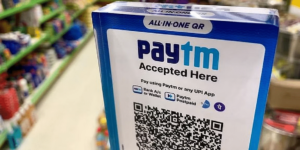It’s not all about the destination—the journey matters, too. In B2B social media marketing, this raises a classic dilemma: Should companies embark on a long trip to organic growth and slowly build up an engaged audience, or should they jump on the high-speed train of paid ads to speed up conversions?
With social media ad campaigns boasting an average ROI of 95%, the temptation to invest in paid strategies is understandable. The promise of immediate visibility, targeted reach, and measurable results can be alluring for businesses seeking quick wins.
But you can’t underestimate the power of organic efforts in creating genuine connections and building a loyal community around your brand. So, can you strike the right balance, and if so, what is the magic formula?

What is organic social media?
Organic social media is the unpaid activities and content you share on social platforms to connect to your audience and hit your marketing goals. It encompasses various tactics, such as posting valuable content, engaging in industry conversations, responding to messages and comments, and building relationships with your followers.
For instance, the cybersecurity firm CrowdStrike promoted a blog on LinkedIn about an upcoming industry convention on identity threat detection and response. This valuable content reaches their followers and anyone else who discovers it through search or shares, all without any direct advertising spend.

Key benefits of organic social media
- Cultivates Brand Loyalty & Trust – Consistently delivering valuable, relevant content establishes you as a thought leader and earns your audience’s trust.
- Builds a Thriving Community – Creates a virtual space where industry professionals can connect, exchange ideas, and engage deeply with your brand.
- Nurtures Customer Relationships – Actively engaging in conversations, answering questions, and addressing concerns builds trust and shows your commitment to customer satisfaction.
- Establishes Long-Term Brand Awareness – While organic reach takes time, it builds a lasting foundation for brand awareness and credibility within your industry.
- Leverages Cost-Effectiveness – Employing your team’s expertise and creativity helps produce compelling content that resonates without straining your budget.
What is paid social media?
Paid social media is a strategic investment in advertising campaigns on social platforms to amplify your reach and improve lead generation. These campaigns utilize targeted advertising tools to display your content to specific demographics, interests, or behaviors, ensuring your message reaches its most relevant audience.
For example, B2B revenue intelligence software company Gong ran a sponsored LinkedIn ad campaign for lead generation. To increase conversions, it offered a cheat sheet of words for sales. Targeting sales professionals ensured that Gong’s ad was seen by those most likely interested in their product.

Key benefits of paid social media
- Achieves Immediate Visibility – Instantly amplifies your reach and puts your message in front of the target audience, generating brand awareness.
- Reaches the Right People – Precise targeting capabilities let you tailor ads based on demographics, interests, and behaviors, ensuring your message reaches the most qualified prospects.
- Scales with Ease—This feature allows you to scale your efforts up or down based on your budget and goals so your reach can adapt as your business grows.
- Unlocks Data-Driven Insights – Leverage detailed analytics and reporting to track key metrics, measure ROI, and make informed decisions.
- Generates Leads – Showcase your offerings to a broader audience, attract new prospects, and nurture them into your sales funnel.
Organic vs. Paid social media: How to divert your resources
While organic and paid social media possess unique strengths, achieving a harmonious balance is critical to maximizing your B2B social media impact.
The ideal allocation of resources between organic and paid efforts hinges mainly on your company’s specific goals and budget. Organic social media should take center stage if your primary objective is to foster long-term brand awareness and cultivate a loyal community. On the other hand, if you’re aiming for immediate lead generation and conversions, paid social media can deliver swift and measurable results.
While there is no one-size-fits-all answer, many B2B companies succeed with a 70/30 approach: allocating 70% of their social media resources to organic efforts (like brand building and thought leadership) and 30% to paid social (for targeted campaigns focused on driving conversions).
However, the optimal ratio will vary based on your industry, target audience, and specific objectives. Continuously monitor and analyze your results to fine-tune your strategy and ensure you’re allocating resources in the most impactful way possible.
Best practices for optimal organic and paid results
1. Maintain a structured content calendar
A well-organized content calendar ensures consistency and helps you plan your organic and paid social media activities in advance. This allows for better team coordination, streamlined content creation, and timely campaign execution. Oktopost provides a robust social media calendar that gives you a real-time overview of all your scheduled and published content across multiple networks, teams, and campaigns.

Investing in organic vs paid social media
2. Conduct organic A/B testing
Before launching paid campaigns, experiment with different content formats, headlines, and calls to action on your organic posts to identify what resonates best with your audience. This will help you fine-tune your messaging and creative elements before investing significant resources in paid promotion. The valuable insights you get will inform your paid campaigns and help optimize your ads for maximum impact and engagement.
3. Use your organic audience to define paid audiences
Analyze your organic followers’ demographics, behaviors, and interests to gain insights into your ideal customer profile. Then, use this information to create highly targeted paid campaigns that reach the most relevant prospects and improve your chances of conversion. This approach ensures your ad spend reaches those most likely to engage with your brand and take the desired actions.
4. Leverage top-performing organic posts for paid ads
Identify your best-performing organic posts based on engagement metrics like likes, shares, and comments. These posts have resonated with your audience, making them ideal candidates for paid promotion. Next, amplify their reach through targeted ads to increase visibility, generate leads, and drive website traffic. This strategy allows you to capitalize on proven content and maximize your ROI.
5. Foster employee advocacy
Encourage your employees to share company content on their personal social media accounts. Employee advocacy can be a powerful method for amplifying your brand’s voice, adding authenticity to your messaging, and building trust with your audience. Plus, tapping into your employees’ networks can potentially reach new prospects.
Oktopost’s employee advocacy tool helps your employees discover, filter, recommend, and share pre-approved company content on their social profiles. It seamlessly connects with your social media management platform to provide shared workflows, campaigns, and reporting, helping your social team save time and be more productive.

6. Implement campaign retargeting
Retargeting allows you to display paid social ads to users who have previously interacted with your brand on social media or your website. This strategy keeps your brand top-of-mind and motivates viewers to take the next step, whether signing up for a webinar, downloading a cheat sheet, or purchasing. Targeting users who have already shown interest increases the chances of conversions and improves your ROI.
7. Monitor and analyze results continuously
Track KPIs for both organic and paid campaigns regularly. Analyze this data to identify trends, understand what’s working and not, and make data-driven decisions to optimize your strategy and resource allocation. Monitoring and analyzing your metrics continuously will allow you to adapt to variable market conditions and ensure your social media efforts remain effective.
8. Embrace social listening
Monitor conversations about your brand, industry, and competitors on social media. Social listening provides invaluable insights into customer sentiment, emerging trends, and potential opportunities or threats. Use this information to inform your content strategy and engage with your audience meaningfully. Leveraging the information gathered from social listening tools like Oktopost helps you stay ahead of the curve and proactively address any issues or concerns.

Integrate organic & paid social media for B2B growth
Organic and paid strategies are not competitors- each has unique strengths and purposes. The true power lies in recognizing their synergy and crafting a cohesive plan that maximizes your brand’s social media impact. Integrating organic and paid efforts seamlessly creates a multi-faceted social media presence that drives engagement, nurtures relationships, and increases conversions.
Tools like Oktopost are essential for managing this complex interplay. Our platform streamlines your social media workflows, empowering you to execute organic and paid campaigns efficiently across multiple channels. With advanced analytics and reporting at your fingertips, you can track performance, identify trends, and make data-driven decisions to optimize your strategy.
Request an Oktopost demo today and start growing your business with a unified organic and paid social media strategy.




![Read more about the article A Brief History of Social Media [Infographic]](https://blog.digitalsevaa.com/wp-content/uploads/2022/08/history-of-social-media-300x150.png)





